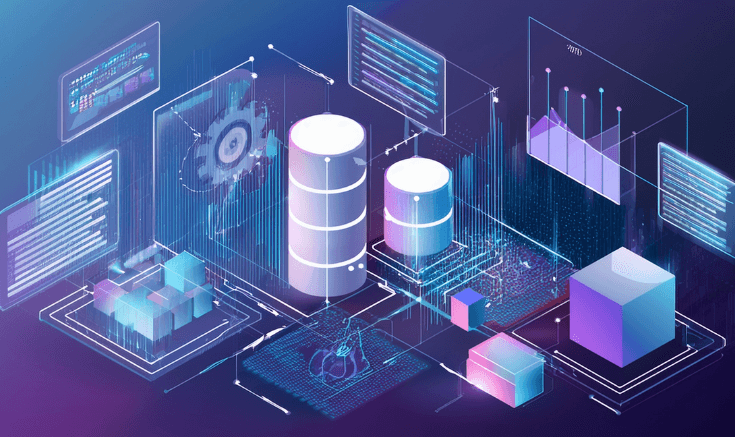

5 essential AI tools for full stack developers
APR. 13, 2025
3 Min Read
AI tools for full stack developers can supercharge efficiency and reduce production risks.
Many businesses implement these solutions to accelerate deployment timelines, align resources with core needs, and discover new revenue streams. Full stack developer AI tools address a range of technical and organizational priorities, from streamlining collaboration to improving code quality. Forward-thinking leaders use these tools to create cost-effective products that resonate with end users.
key-takeaways
- 1. AI tools for full stack developer workflows help automate complex tasks and speed up release cycles.
- 2. Predictive analytics libraries and code generation platforms reduce manual workloads and highlight improvement areas.
- 3. Automated testing frameworks strengthen software reliability, cutting down late-stage defects.
- 4. Natural language code assistants foster team collaboration and accelerate problem resolution.
- 5. AI-based DevOps solutions streamline resource allocation and maintain stable pipelines.
Understanding AI tools for full stack development

Engineers across various industries face tight timelines and complex requirements, prompting an interest in AI tools for full stack development projects. AI solutions provide a direct way to automate repetitive tasks, analyze code in real time, and produce robust outcomes with fewer resource constraints. Many organizations rely on these resources to optimize speed to market and align technical efforts with shifting customer needs. Full stack developers gain a strategic edge by adopting data-based techniques that streamline everything from prototyping to deployment.
AI adoption strategies extend well beyond coding assistance, offering solutions that assess performance metrics, detect security vulnerabilities, and project future workload levels. A strong understanding of these platforms helps you build cost-effective solutions while reducing production risks. Adoption also reveals fresh business possibilities, letting development teams make purposeful design choices that serve both technical and commercial objectives. These benefits explain why full stack developer AI tools remain an important catalyst for teams hoping to achieve consistent results.
“Adoption also reveals fresh business possibilities, letting development teams make purposeful design choices that serve both technical and commercial objectives.”
5 essential AI tools for full stack developers

1. GitHub Copilot
Teams looking to accelerate front-end and back-end tasks often turn to Github Copilot for immediate suggestions. This solution analyzes context from existing functions and provides lines of code that fit the intended functionality, reducing time spent searching references. Code predictions align closely with established frameworks and libraries, helping you meet deadlines with fewer syntactic errors. Productivity skyrockets because developers can handle more tasks in less time without compromising on standards.
Some engineers report more than a 20% reduction in overall coding hours once they adapt to Github Copilot’s interface. This improvement indicates a concrete rise in efficiency for both small and large teams. Reduced workload means more bandwidth for innovation, allowing quick pivots when clients or executives request changes. Mastering this platform unlocks repeatable gains that ensure cost-effectiveness across multiple projects.
2. Tabnine
Tabnine is another valuable resource that anticipates your code requirements and offers suitable completions. These suggestions frequently align with coding style guidelines, allowing you to keep your projects consistent and clear. The platform works with various programming languages, so cross-functional teams can integrate it into different workflows. Back-end specialists often appreciate the single-line and full-function recommendations that cut down on guesswork.
Enterprise teams indicate shorter release cycles once Tabnine is introduced to the pipeline. Quick feedback loops and direct inline hints make it simpler for less experienced developers to contribute. This approach accelerates onboarding, so new hires immediately add value to ongoing tasks. Long-term benefits include smoother collaboration and controlled budgets due to minimized rewrite efforts.
3. MERN.AI

MERN.AI is designed to simplify the entire build cycle for MongoDB, Express, React, and Node deployments. It automatically pieces together common project structures such as authentication flows, user interfaces, and database configurations. This frees up time for more complex tasks like custom logic or advanced data analytics. Teams that implement Mern.ai often report faster concept-to-demo timelines, which leads to stronger confidence from stakeholders.
Pre-built modules manage routing and security features so you can address functionality gaps without getting stuck in boilerplate. This approach can lead to measurable cost reductions since fewer hours are spent on repeated tasks. Projects transition from idea to production more efficiently, reinforcing predictability for budget forecasts. Fine-tuning these modules also results in a stable foundation that maintains performance under scaling demands.
4. Workik
Workik offers extensive guidance by reviewing codebases and providing context-specific tips for both front-end and server-side components. Its engine identifies possible improvements and security vulnerabilities, giving you actionable next steps before code moves into production. The platform helps unify teams by centralizing feedback, which supports managers overseeing large projects. Many professionals find that it contributes to shorter QA timelines, thanks to prompt identification of high-impact issues.
Some development leads notice enhanced cross-team communication after introducing Workik, leading to fewer misaligned deliverables. These results translate to direct savings in both time and resources. Comprehensive oversight also fosters better knowledge sharing, raising collective expertise without complicated training sessions. Iterations become more predictable, allowing strategic decision makers to chart expansions that match growth targets.
5. Sourcegraph Cody
Sourcegraph Cody helps developers sift through massive repositories easily, highlighting relevant code or documentation segments. This advanced search supports critical tasks such as refactoring, performance optimization, and security audits. Large organizations find it indispensable because it quickly pinpoints problem areas in legacy systems. You gain clarity on how different modules interact, enabling more confident updates and feature additions.
Faster lookups mean less time spent manually browsing endless lines of code, which leads to quantifiable improvements in project velocity. Code reviews become more precise, raising the quality of deployed solutions. This advantage proves especially important when balancing multiple projects and meeting aggressive deadlines. Clear insights on code structure also encourage consistent standards, elevating the reliability of full stack developer tools for the long term.
"Each challenge can be handled proactively with the right planning, ensuring that AI tools enhance your daily workflow rather than complicate it.”
Challenges and considerations in adopting AI tools for development

Many organizations recognize the promise of AI solutions, yet certain pitfalls can surface without proper planning. Some teams underestimate the importance of training data quality or misjudge the learning curve for these platforms. Others discover that a lack of internal expertise leads to stalled progress or incomplete implementations.
- Data privacy: Strict regulations may dictate where and how you store or process information. Understanding compliance rules can prevent fines and customer mistrust.
- Integration complexity: Poorly aligned APIs or conflicting libraries can force extra development hours. Early planning reduces friction between new and existing systems.
- Performance overhead: Adding AI modules may introduce extra latency or resource consumption. Identifying hardware constraints ensures you stay within budget while meeting performance targets.
- Talent shortages: Teams without data science knowledge risk incomplete adoption. Creating training programs or hiring specialized experts mitigates these gaps.
- Continuous maintenance: Regular model updates and versioning can become an ongoing responsibility. Factoring maintenance tasks into project roadmaps avoids disruptions at critical stages.
Addressing these considerations prompts a more deliberate approach to adoption. Each challenge can be handled proactively with the right planning, ensuring that AI tools enhance your daily workflow rather than complicate it. Once these concerns are factored in, you can allocate resources more effectively and measure outcomes with clearer benchmarks. This sense of clarity lays the groundwork for integrating AI tools without putting existing processes at risk.
Strategies for integrating AI tools into your development workflow

Align AI objectives with business goals
Identify the most urgent business needs and define how AI solutions can address them with measurable results. This approach helps you prioritize projects that yield strong returns, especially when resources are limited. Communicate these objectives across technical and non-technical teams so everyone understands the value proposition. Clarity on desired outcomes reduces guesswork and aligns your investment with broader organizational targets.
Select incremental deployments
Start by applying AI to smaller tasks before expanding into more advanced use cases. This method reveals performance bottlenecks early and gives your team time to refine workflows. An incremental rollout also supports stakeholder buy-in since successes can be demonstrated in real time. Over the long run, these initial wins cultivate trust in AI-assisted initiatives, boosting overall adoption.
Maintain transparent feedback loops
Encourage open communication across teams so that any technical or operational issues come to light quickly. Clear feedback channels highlight potential gaps in model accuracy, code integration, or user satisfaction. This active exchange promotes trust among developers and business leaders, allowing for prompt course corrections. Consistent input from all stakeholders helps you optimize solutions and keep them aligned with both short-term and long-term milestones.
AI solutions are not simply coding shortcuts—they are strategic catalysts that unlock faster, more adaptable development outcomes. This approach allows your organization to focus on delivering value rather than juggling repetitive tasks. At Lumenalta, we specialize in crafting tailored AI implementations that align with your priorities, ensuring you stay ahead of shifting requirements. Let’s chart a brighter path forward.
table-of-contents
- Understanding AI tools for full stack development
- 5 essential AI tools for full stack developers
- 1. GitHub Copilot
- 2. Tabnine
- 3. MERN.AI
- 4. Workik
- 5. Sourcegraph Cody
- Challenges and considerations in adopting AI tools for development
- Strategies for integrating AI tools into your development workflow
- Common questions about AI tools for full stack developers
Common questions about AI tools for full stack developers
What are the benefits of AI tools for full stack developer teams?
How do full stack developer AI tools handle security checks?
Can full stack developer tools powered by AI replace human developers?
Which industries benefit most from AI tools for full stack developer workflows?
How do these solutions support ongoing maintenance?
Want to learn how AI-led automation can lower costs and increase trust in your operations?










